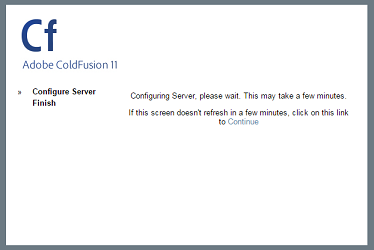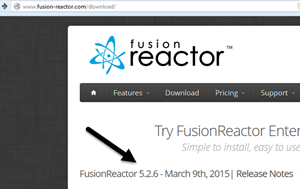Note: This blog post is from 2014. Some content may be outdated--though not necessarily. Same with links and subsequent comments from myself or others. Corrections are welcome, in the comments. And I may revise the content as necessary.
I realize that title may seem anachronistic. Why talk about hotfixes in CF9 and earlier, in 2014, indeed as
CF11/Splendor is in beta? But I'll tell you that I still
help people daily who are still on those older releases, and
often they have problems that may have long since been solved by a hotfix or a cumulative hotfix they never applied--or may be caused by misapplication of such hotfixes.
Of course, in CF10 it's easier now because of the built-in "server updates" feature of the CF Admin. But in earlier releases, it was all on you to both keep up on the updates and to apply them manually. And a lot of people either never bothered, or may have tried and failed, or did it but got it wrong.
What you need to know
So in this blog entry, I some key info that will help you, if you may be in need of applying one or more of those updates to CF9 and earlier. Indeed, I'll point to some past entries I've done where I shared a lot more detail that I find is vital and rarely mentioned when some people try to share just the bare minimum of info (often leaving people hanging).
For instance, I'll help you answer such questions as what hotfixes do you already have applied? How do you find out? And you need to know exactly what version of CF you have, whether 9.0/9.0.1/9.0.2, 8.0/8.0.1, 7.0/7.0.1/7.0.2, and so on. I'll explain how to tell and why that's important, and especially when it comes to finding and applying hotfixes. And if you have applied hotfixes, are you sure you have done it right? It's easy to get things wrong and botch things. I'll help you avoid several very common mistakes.
(That's why it's so great that CF10 finally handles things for us. But this entry, focused on 9 and earlier, is not the place to discuss concerns with the CF10 hotfix mechanism. If you have questions or concerns about that, see the substantial CF10 Hotfix Installation Guide from Adobe, a 50-question FAQ on all things related to that feature.)
I'll also point you to where to find hotfixes and installers for CF9 and earlier (not as easy as it may seem), and still more.
If any of that's of interest, and I hope it is if you're on CF9 or earlier, then read on.
[....Continue Reading....]
 Someone presented a problem on a discussion list where they found that upon installing CF, they got to the "migration wizard" screen, and though it offered the option to "continue" if it hung up, it did not continue for him.
Someone presented a problem on a discussion list where they found that upon installing CF, they got to the "migration wizard" screen, and though it offered the option to "continue" if it hung up, it did not continue for him.  FusionReactor users will want to know that there was a new update released today, 5.2.6. The update is free for those on 5.2.x releases as well as those with maintenance agreements. And you can just download the installer and run it to update your current version (even back to FR 5.0, if you've not updated FR 5 since you first installed it).
FusionReactor users will want to know that there was a new update released today, 5.2.6. The update is free for those on 5.2.x releases as well as those with maintenance agreements. And you can just download the installer and run it to update your current version (even back to FR 5.0, if you've not updated FR 5 since you first installed it). 






